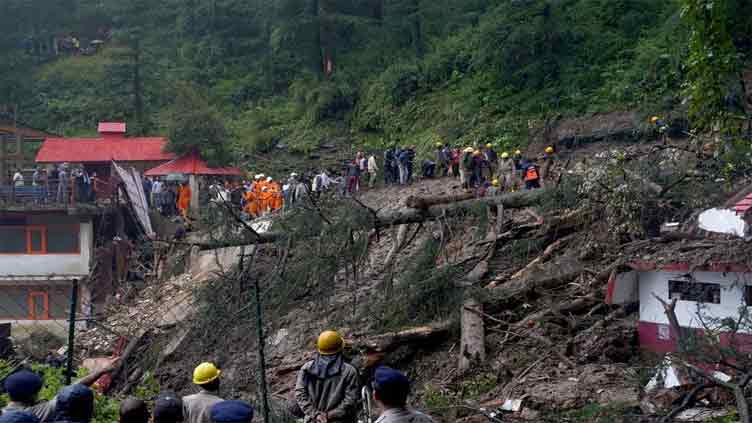Shift in monsoon pattern: Global warming linked to intense rains in India's Himalayas

World
Clash between monsoon currents, westerlies behind extreme weather in HP, Uttarakhand
NEW DELHI (Reuters/Web Desk) - Torrential rains that have battered India's Himalayas in recent years, killing hundreds of people and causing billions of dollars in damage, are becoming more intense due to a clash of weather systems triggered by global warming, scientists said, Reuters says in a report.
At least 240 people have died this year in the mountainous region as landslides and flash floods triggered by heavy rains buried homes and destroyed crops and infrastructure.
This Reuters report sounds familiar as Lahore and adjoining areas of northeast Punjab in Pakistan too at several intense rain events – record-breaking on two occasions – this season in late June and early July as Western Disturbances and monsoon currents converged in the region.
Read more: Extreme weather events in Pakistan: WMO says climate change effects rising in Asia
However, Pakistan, just like India, has received far below monsoon rains during August because of weaker monsoon currents from Bay of Bengal and Arabian Sea.
Similarly, the monsoon pattern is also shifting in Pakistan with the north and north-eastern region of Punjab as well as Kashmir and upper Khyber Pakhtunkhwa are receiving less rains during the season in since 1980s.
The Reuters further notes that seasonal monsoon showers are vital for India's $3-trillion economy, bringing nearly 70 per cent of the rain the country needs to water farms and refill reservoirs and aquifers.
But the monsoon's convergence with a low-pressure weather system in the Himalayas in recent years has caused extremely heavy rains, something that scientists and officials have blamed on rising temperatures.
"Think of it as a collision of two forceful systems," said Kuldeep Srivastava, head of the India Meteorological Department's regional centre in New Delhi.
"It causes significant rain, or even cloudbursts ... we are noticing in the last few years, intense spells of rain lasting short durations," he said, adding that this was due climate change driven by global increase in temperatures.
The number of very heavy to extremely heavy rainfall days per decade in India's Himalayan states of Himachal Pradesh (HP) and neighbouring Uttarakhand increased to 118 between 2011 and 2020 from 74 in the preceding decade, data from the weather office showed.
At least 166 people have died in HP and 74 in Uttarakhand this year since June in landslides, flash floods and other rain-related incidents, according to government data.
Rains battered the two states following the convergence of the monsoon system with Western Disturbances, a weather system that originates in the Mediterranean Sea and moves east, bringing moisture-laden winds that cause winter rain and snow in the Himalayas.
Western Disturbances usually pass north of India's northern border between the summer and monsoon months of June and October, but, as temperatures rise, some of them move slightly south, said VP Dimri, director of the Indian Institute of Geomagnetism.
"Because of sea surface temperature warming, the Western Disturbances have more energy ... similarly, general warming of the earth is also leading to change in wind motions," he added.
Monsoon rainfall patterns across India have seen a climatic shift in the recent decades, said Roxy Mathew Koll, a scientist at the Indian Institute of Tropical Meteorology.
"The most significant change is that instead of having moderate rains spread out through the monsoon season, we have long dry periods intermittent with short spells of heavy rains," Koll said.

